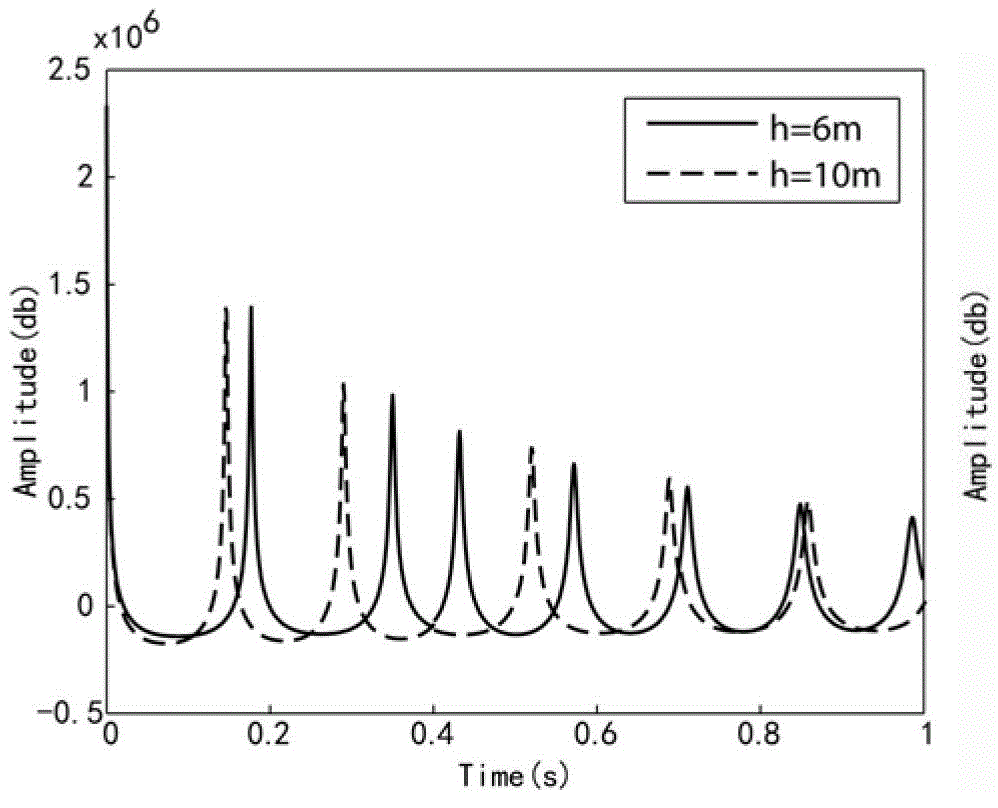Frequency division matched filtering method for improving offshore seismic data resolution by utilizing seismic focuses of different depths
A technology of seismic data and matched filter, applied in the direction of seismic signal processing, etc., can solve the problems of difficulty in obtaining seismic records, restricting high-resolution exploration of offshore oil and gas, restricting resolution, etc.
- Summary
- Abstract
- Description
- Claims
- Application Information
AI Technical Summary
Problems solved by technology
Method used
Image
Examples
Embodiment Construction
[0055] The method for improving the resolution of marine seismic data by using airgun sources at different depths, the steps are as follows:
[0056] 1) Excite the airgun source at different depths to obtain near-field wavelets:
[0057] Place the airgun seismic source at different depths at the same sea level point to excite, and use the hydrophone to record the near-field wavelet of the seismic source at a distance of 1 meter vertically above the seismic source. The specific observation method is as follows: figure 1 as shown, figure 2 The simulated near-field wavelets are excited by the airgun at depths of 6 meters and 10 meters respectively. It can be seen that the oscillation period and initial bubble ratio of the near-field wavelets excited at different depths are different; if necessary, the airgun source can also Can be placed at depths of 3 or 15 meters at the same sea level site.
[0058] 2) The far-field wavelet is obtained by simulation:
[0059] Let the depth h ...
PUM
 Login to View More
Login to View More Abstract
Description
Claims
Application Information
 Login to View More
Login to View More - R&D
- Intellectual Property
- Life Sciences
- Materials
- Tech Scout
- Unparalleled Data Quality
- Higher Quality Content
- 60% Fewer Hallucinations
Browse by: Latest US Patents, China's latest patents, Technical Efficacy Thesaurus, Application Domain, Technology Topic, Popular Technical Reports.
© 2025 PatSnap. All rights reserved.Legal|Privacy policy|Modern Slavery Act Transparency Statement|Sitemap|About US| Contact US: help@patsnap.com



